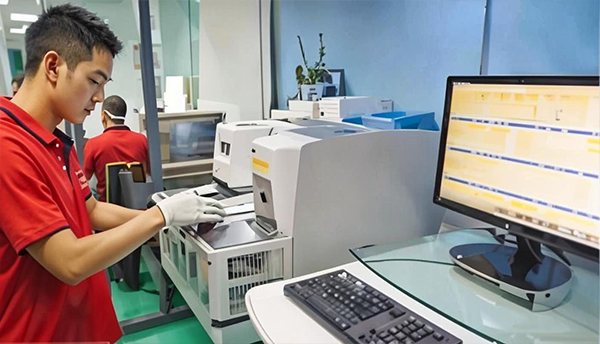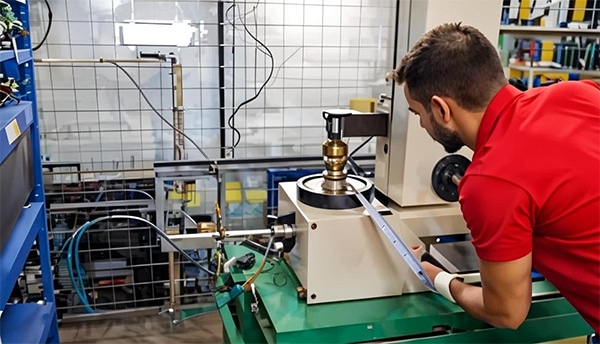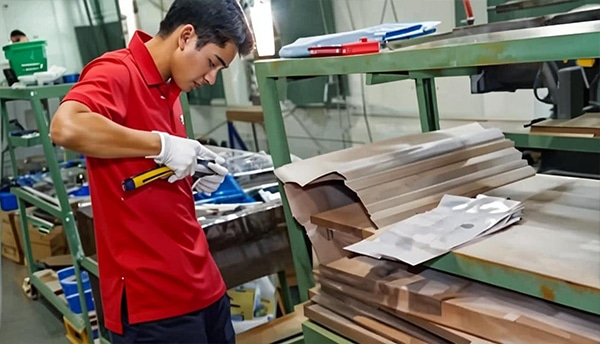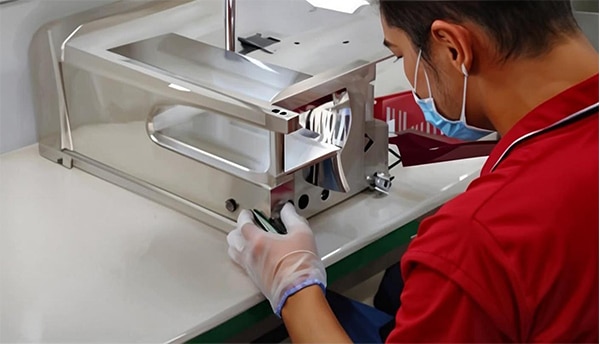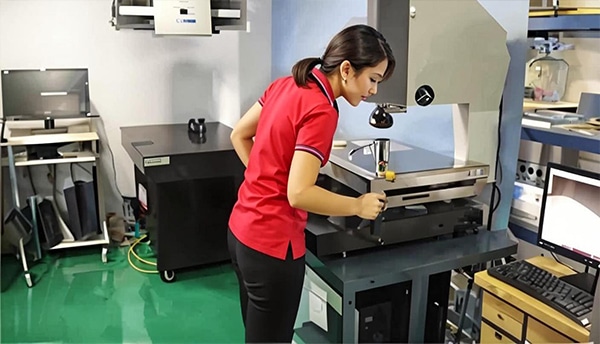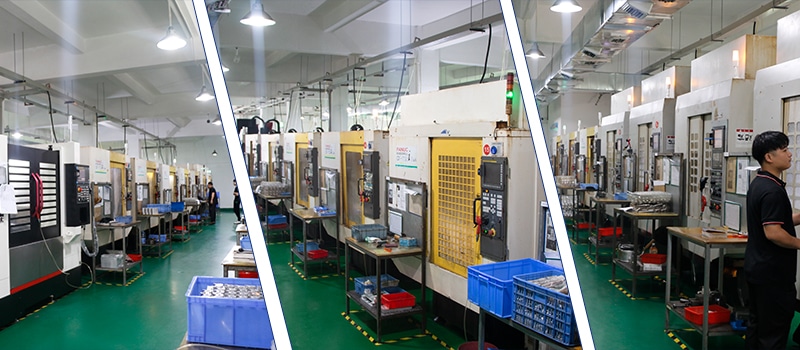Description
Understanding CNC Machining
CNC machining, or Computer Numerical Control machining, represents a transformative leap in the realm of manufacturing, facilitating the production of highly precise components with remarkable efficiency. At its core, CNC machining utilizes computer programming to direct machine tools in the fabrication of parts, enabling manufacturers to achieve intricate designs and high tolerances that are critical in fields like aerospace, automotive, and medical instrumentation.
The technology behind CNC machining revolves around a set of instructions, typically written in a programming language known as G-code, which dictates the movements of the machine’s tools. This allows for consistent production quality, reducing the chance for human error, while also enhancing the overall speed of production. Gone are the days of manual machining, where operator skill significantly influenced the outcome; CNC machining provides a level of repeatability and reliability that is essential for modern manufacturing.
There are several types of CNC machines, including CNC lathes, CNC mills, and CNC routers, each tailored to specific tasks and materials. For instance, CNC lathes are primarily used for producing cylindrical parts, while CNC mills are adept at creating complex shapes with multiple axes of movement. These machines can accommodate various materials such as metal, plastic, and wood, expanding their applicability across industries.
The basic principles of CNC machining hinge on the precise control of movement and tool interaction with the workpiece. By employing a series of programmed commands, CNC machines can execute cutting, drilling, and shaping operations with extreme accuracy. This is critical in achieving parts that not only meet strict dimensions but also possess the desired surface finishes. Understanding these fundamentals is crucial for anyone interested in the intricacies of modern manufacturing and the role of precision CNC machining in producing components, such as 345 Axis aluminum parts.
The Benefits of Using Aluminum in CNC Machining
Aluminum has emerged as a highly favored material in the field of CNC machining, offering a series of distinct advantages that make it suitable for producing precision parts. One of the most significant benefits of aluminum is its lightweight nature. This property is particularly advantageous in applications where reducing weight is crucial, such as in the aerospace and automotive industries. The lighter the components, the more efficient the overall system tends to be, leading to improved performance and fuel efficiency.
Moreover, aluminum boasts an excellent strength-to-weight ratio, which allows manufacturers to produce robust components without compromising on weight. This characteristic is essential for precision machining, as parts must endure various stresses while maintaining structural integrity. The ability to create strong, lightweight components has made aluminum an ideal material choice in numerous high-performance applications.
Another noteworthy benefit of aluminum is its inherent corrosion resistance. Aluminum naturally forms a protective oxide layer when exposed to the environment, which helps prevent rust and degradation. This attribute extends the lifespan of components, reducing maintenance costs and the need for frequent replacements, a crucial factor in industries that rely heavily on durability.
In terms of machinability, aluminum is highly favorable for CNC machining due to its ease of cutting and shaping. The material responds well to machining processes, enabling the production of precise components with tight tolerances. This combination of factors results in reduced processing times and increased productivity, making aluminum not only an efficient option but also a cost-effective solution for bulk production.
Ultimately, the economic benefits of using aluminum further solidify its position as a material of choice for manufacturers. The balance of cost-effectiveness, lightweight properties, strength, corrosion resistance, and excellent machinability leads to a compelling case for utilizing aluminum in precision CNC machining applications.
Exploring 345 Axis Machining Techniques
The 345 axis machining technique represents a significant advancement in the field of precision CNC machining, surpassing traditional methods in its capacity to create complex geometries. Unlike conventional three-axis machines, the 345 axis machining integrates additional rotation, providing enhanced versatility in manufacturing intricate components. This process allows for the simultaneous manipulation of parts in three linear dimensions as well as rotation about two axes, which results in a more efficient and accurate machining process.
The operational mechanics of 345 axis machining involve a sophisticated configuration that accommodates various angles and positions. By enabling the machining tool to work from multiple perspectives, it greatly minimizes the need for resetting or repositioning the workpiece, which can lead to inconsistencies and inaccuracies in dimensional tolerances during traditional machining. As a result, components crafted with this method can achieve tighter tolerances and more complex features, which are increasingly demanded across various sectors.
Industries such as aerospace, automotive, and medical device manufacturing benefit immensely from the capabilities of 345 axis machining. In aerospace, for instance, the need for lightweight yet robust components is critical, and this technique allows for the efficient shaping of advanced aluminum parts that meet rigorous specifications. Similarly, the automotive industry exploits these advantages to enhance the performance and efficiency of vehicle components, ensuring they are not only functional but also optimized for weight and strength.
In addition to these applications, 345 axis machining proves essential for producing custom parts that align precisely with engineers’ specific requirements. The increased precision provided by this technology empowers designers to explore innovative solutions that were previously deemed too complex or infeasible. Overall, the advent of 345 axis machining firmly establishes itself as a pivotal evolution in the realm of CNC machining, offering unparalleled advantages for the development of intricate, high-performance aluminum parts.
Custom CNC Machining: Tailoring Solutions for Specific Needs
Custom CNC machining is a pivotal element in the manufacturing sector, enabling the creation of parts that meet specific customer requirements. The process begins with understanding the unique specifications of each client, which may include precise dimensions, material properties, and functional capabilities. By thoroughly gathering this information, manufacturers can tailor their solutions to effectively address the unique challenges presented by each project.
Once the requirements are established, advanced CAD/CAM software plays a crucial role in the design phase of custom CNC machining. These digital tools allow designers to create highly detailed models that can be manipulated to achieve the desired specifications. With the ability to simulate machining processes within the software, engineers can evaluate various design alternatives, optimizing for factors like material usage and machining efficiency. This reduces the likelihood of costly modifications later in the manufacturing process.
Iterative prototyping is another key component in the customization landscape of CNC machining. By creating initial prototypes, manufacturers can assess the performance and fit of a part before moving to full-scale production. This process not only identifies potential design flaws but also allows for adjustments based on client feedback. As a result, custom CNC machining delivers enhanced precision and functionality tailored to specific operational needs.
Numerous case studies showcase the advantages of bespoke CNC machining services. For example, a company requiring precision aluminum components for an aerospace application benefited from a customized design that incorporated lightweight materials while maintaining structural integrity. This approach demonstrates how custom solutions optimized for specific requirements can lead to improved performance, reduced weight, and ultimately, better end products. Such successes affirm that custom CNC machining is an invaluable resource for businesses looking to refine their manufacturing capabilities.
Quality Control in CNC Machining
Quality control is a fundamental aspect of the CNC machining process, particularly in the precision machining of 345 axis aluminum parts. Ensuring the accuracy and precision of manufactured components is essential for meeting the stringent requirements of various industries. Various quality control techniques and inspection tools play a critical role in verifying that each part adheres to the specified tolerances and standards.
One commonly used method is statistical process control (SPC), which involves monitoring and controlling the machining process by collecting and analyzing data. This technique helps identify variations in the manufacturing process and allows for proactive measures to be implemented before defects occur. Additionally, employing coordinate measuring machines (CMM) enables manufacturers to perform accurate measurements and inspections of complex geometries and dimensions.
Certification standards such as ISO 9001 and AS9100 are crucial for maintaining high-quality levels in CNC machining facilities. These standards provide a framework for effective quality management systems and require regular audits to ensure compliance. Key performance indicators (KPIs) are also implemented to measure efficiency, including defect rates, yield rates, and on-time delivery performance. Monitoring these indicators helps pinpoint areas needing improvement and ensures that production meets customer expectations.
Moreover, the regular maintenance and calibration of CNC machines are vital for sustaining quality control. A well-maintained machine ensures precise cuts and consistent performance, which directly influences the quality of finished components. Implementing a routine maintenance schedule reduces the risk of mechanical errors and prolongs the equipment’s lifespan.
Effective quality control measures not only enhance production efficiency but also significantly impact customer satisfaction. By consistently delivering high-quality parts that meet stringent specifications, manufacturers can build trust and establish long-lasting relationships with clients, ultimately fostering a robust reputation in the competitive landscape of CNC machining.




